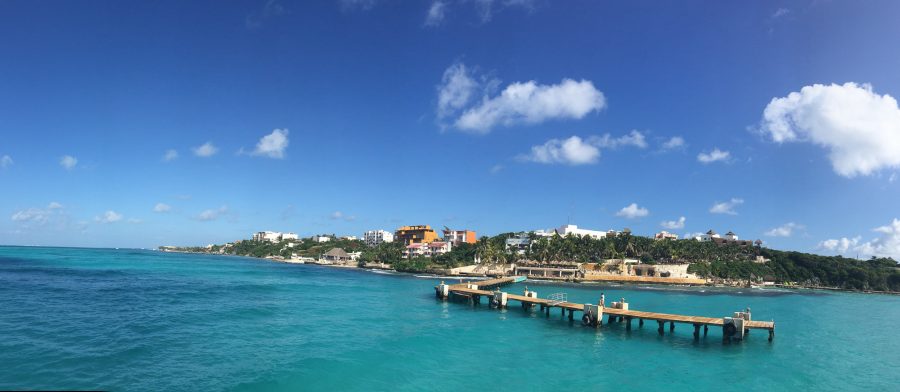Cities are more than tourism hot spots
November 29, 2016
 When I stepped out of the airport in Cancun, Mexico, I was instantly greeted by a barrage of taxi drivers clamoring around, speaking in English, offering rides to whatever destination I wished.
When I stepped out of the airport in Cancun, Mexico, I was instantly greeted by a barrage of taxi drivers clamoring around, speaking in English, offering rides to whatever destination I wished.
Swerving down the road in a shiny new minivan, I saw giant mall complexes displaying glitzy signs that advertised luxury brands — Louis Vuitton, Gucci, Chanel. Road signs were everywhere, seemingly demanding that we try parasailing, swimming with dolphins or scuba diving. A variety of restaurants flaunted high-class dining with food from every region imaginable. Finally, we pulled up to the Marriott hotel, and a busboy opened the car door.
“Welcome to Mexico,” he said.
The tourism culture in many countries has pushed industries to appeal to visitors’ wants and demands rather than trying to show off an authentic representation of the culture and traditions of the country.
Although people are free to seek out their own trips based on their own agendas, it’s important to realize that a trip based on popular tourist attractions is not an accurate representation of the country. Rather, people should try to make an effort to branch out in new countries and learn about the culture past the surface-level appearances of what is easily accessible.
Get The Daily Illini in your inbox!
A short bus ride from the resort-cluttered, tourist-populated area brought me to a smaller neighborhood, where children wearing their school uniforms chatted in the grass and elderly women were rolling carts to the market to buy groceries. Smaller, terracotta-style buildings painted in vibrant colors lined the streets with its occupants sitting on the steps, fanning themselves to beat the heat.
In this neighborhood, I received a lot more stares and side-eyeing than in the resort part of the city — because it was clear that these locals have had less interaction with foreigners. Unlike the resort side, I heard virtually no English being spoken, and I was forced to reach back into the little Spanish I had accumulated from my high school years just so I could place an order for lunch.
This environment contrasted starkly from the high-rise buildings, yacht boats and luxury-item stores that were the norm just about 15 minutes away.
Unfortunately, this phenomenon of differentiating socioeconomic conditions and overall cultural environment in close proximity is not limited to Mexico.
It exists even in Chicago, where the differentiating socioeconomic conditions of different nighborhoods are clearly evident. The murder rates in the most dangerous parts of the city, the South and West sides, are as much as 80 times higher than the rates of neighborhoods on the North side.
Again, it’s important to acknowledge that Chicago is more than just its popular attractions of the Willis Tower and the John Hancock Building, and that violence is another factor that is part of the city’s history, rather than looking at the city through rose-colored glasses and disregarding the parts that we don’t like to see.
Understanding a city or a country’s culture as a whole, past the surface level, is important in that it allows visitors to gain depth from their experience by acknowledging the problems or corruption that may exist and obtaining a more accurate perspective of the area.
Minju is a sophomore in Media.







